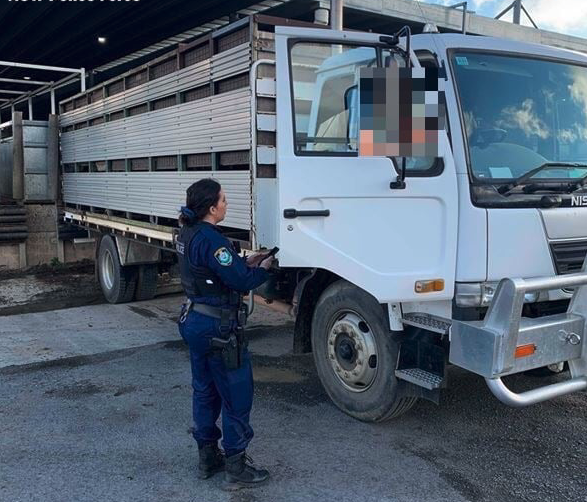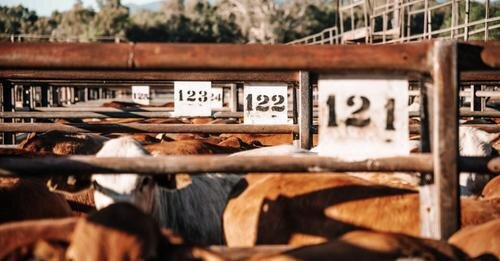Effective grazing management relies on a producer’s ability to match pasture with the appropriate stock classes that comprise a grazing business. Livestock performance is driven by energy intake, and in a grazing environment, the principal source of energy comes from pasture.
A producers ability to effectively match livestock needs with pasture comes down to their ability to assess the amount of feed in available and to make an assessment of its quality. Assessing the amount is one of the key skills for any graziers.
While some producers talk about herbage mass or pasture mass, a more commonly used term is Feed On Offer or FOO. This term describes the amount of pasture in a paddock at any given time and is measured in kilograms of dry matter (kg DM / ha)The level of FOO within a paddock is determined by two key factors. The first is the height of the plants growing in the paddock, and the second is the density of plants across the paddock. To make an accurate assessment of FOO, graziers need to consider these two factors as they make their pasture observations.
Variation in height and density across paddocks, and across farms can be significant. Producers who want to make accurate assessments of FOO can make their assessments visually, or physically using tools that include rising plate meters, or physically cutting, weighing and calculating FOO from these collected pasture samples. However, physical assessments, or visual assessments may still not achieve an accurate measure of a paddocks level of FOO. Often the variation in paddocks is not reflected due to bias in sampling or assessing.
This bias is often inadvertent. Its generally caused through a combination of access to all areas of the paddock, small sample sizes and simple errors in assessing. Avoiding bias, particularly in physical assessment requires a rigorous approach to sampling, such as establishing formalized transects. However this approach is often time consuming and depending on paddock size, may still not account for the variation in a paddock.
Satellite Data
Satellite imagery offers a more efficient and accurate method of determining FOO within paddocks or for an entire property. The Cibo Labs PastureKey service determines FOO using satellite images which are updated every 5 days. The satellites determine pasture height. More importantly they also assess both pasture density, and they can see the entire paddock or farm area, which allows the variation in pasture to be accurately determined.
The data derived from these images allows the PastureKey service to develop accurate levels of FOO. Pasture key reports both the Total amount of Standing Dry Pasture (TSDM kgs DM/Ha) and then the FOO which is calculated by the average TSDM multiplied by paddock area after forest and woodland areas (>20% tree cover) have been excluded.
This process offers a very accurate summary of the FOO in a paddock. Developing an accurate feed budget for livestock is simplified when the level of FOO is known. Having the variation from across a paddock accounted for by satellites invariably means these budgets are more accurate and so provide better support for producers grazing decisions.
One of the useful aspects of the Pasture Key service is the visual representation of FOO within each paddock of a user’s farm. The Feed on Offer is shaded from Red to Green to reflect the lowest to highest percentiles.
This visual representation offers a quick guide regarding the FOO levels across the entire farm as well as within individual paddocks.
Can the AFM be used to calculate FOO?
Feed On Offer (FOO) can be calculated from the data provided from the Australian Feedbase Monitor as well as from Pasture Key. A key difference is the scope of data between these two products.
Data generated from the AFM is calculated on a larger scale (1Ha) as opposed to 10m2 area used in Pasture Key. This means users cannot compare FOO levels on a paddock basis and may also find the variation across their farms is less visible than in the higher resolution product. However, the use of satellite data ensures that the Total Standing Dry Matter amounts reported are more accurate and unbiased compared to those producers may physically undertake.
Using FOO to meet livestock demands
The amount of feed livestock require is determined by factors such as age, sex, weight and production status. These classes directly impact daily feed intake, which in turn impacts the number of animals to be stocked per hectare and the length of time that animals can be stocked before the FOO levels fall below the minimum amount required for that class of stock.
There are well established benchmarks which can be consulted as part of this process of matching FOO with livestock requirements.
Temperate Pasture Benchmarks (FOO) for livestock
Tropical Pasture Benchmarks
Minimum green herbage mass (kg DM/ha) to maintain satisfactory production levels in cattle and sheep on tropical grass pastures with digestibility of 65% (9.2 MJ ME/ kg DM), 60% (8.4 MJ ME/kg DM) and 55% (7.5 MJ ME/kg DM)). Note these predictions are based on a pasture which includes 400 kg DM/ha dead pasture with a digestibility of 45%.
These benchmarks provide a guide for producers wanting to match their livestock requirements with their current levels of Feed on Offer (FOO). While the AFM doesn’t provide digestibility levels, producer can use the timescale and 5 daily updates to see if their TSDM is increasing or falling. As a general guide decreasing FOO amounts can provide an indication of lower digestibility as pastures are aging or diminishing.
The PastureKey service allows producers to view the Fractional Cover of their paddocks which highlights areas of growth or decay. This can be used as a basic guide for higher or lower digestibility which then identifies the most suitable benchmark to match to stock numbers.
Accurately knowing FOO levels allows producers to make more accurate and informed decisions and choices for their livestock and pasture. As FOO levels change due to both season and livestock consumption, budgets should be regularly updated, and PastureKey and AFM offer an efficient, timely and accurate starting point for all producers.















































![Lot 7[1].jpg](https://images.squarespace-cdn.com/content/v1/5da3f3cd64169331e9219d64/1573094582042-DWJ37SGR39YOF5OH2NIX/Lot+7%5B1%5D.jpg)


















